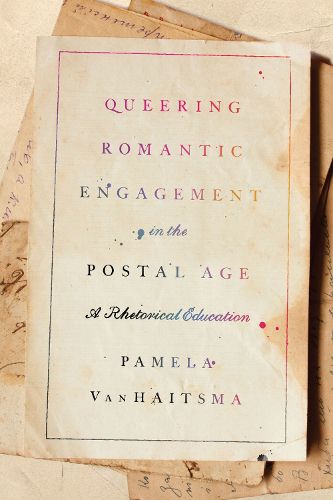Readings Newsletter
Become a Readings Member to make your shopping experience even easier.
Sign in or sign up for free!
You’re not far away from qualifying for FREE standard shipping within Australia
You’ve qualified for FREE standard shipping within Australia
The cart is loading…






2020 Winifred Bryan Horner Book Award Honorable Mention from the Coalition of Feminist Scholars in the History of Rhetoric and Composition
Romantic letters are central to understanding queer history. Debates about letters of "romantic friendship," however, too often reduce them to unstudied expressions of heartfelt feeling. In Queering Romantic Engagement in the Postal Age, Pamela VanHaitsma shows how the genre should be understood as a learned form of rhetoric.
VanHaitsma argues that epistolary instruction in the nineteenth-century United States shaped civic engagement in predictably heteronormative ways even as it opened up possibilities for queer rhetorical practices. Her archival study draws on writings whose authors, diverse by gender, race, class, and education, all developed ways of queering cultural norms and generic conventions in their same-sex relationships. VanHaitsma theorizes a new concept of rhetorical education for romantic engagement to account for the significant yet understudied role of such training in inventing both civic and romantic life.
$9.00 standard shipping within Australia
FREE standard shipping within Australia for orders over $100.00
Express & International shipping calculated at checkout
Stock availability can be subject to change without notice. We recommend calling the shop or contacting our online team to check availability of low stock items. Please see our Shopping Online page for more details.
2020 Winifred Bryan Horner Book Award Honorable Mention from the Coalition of Feminist Scholars in the History of Rhetoric and Composition
Romantic letters are central to understanding queer history. Debates about letters of "romantic friendship," however, too often reduce them to unstudied expressions of heartfelt feeling. In Queering Romantic Engagement in the Postal Age, Pamela VanHaitsma shows how the genre should be understood as a learned form of rhetoric.
VanHaitsma argues that epistolary instruction in the nineteenth-century United States shaped civic engagement in predictably heteronormative ways even as it opened up possibilities for queer rhetorical practices. Her archival study draws on writings whose authors, diverse by gender, race, class, and education, all developed ways of queering cultural norms and generic conventions in their same-sex relationships. VanHaitsma theorizes a new concept of rhetorical education for romantic engagement to account for the significant yet understudied role of such training in inventing both civic and romantic life.